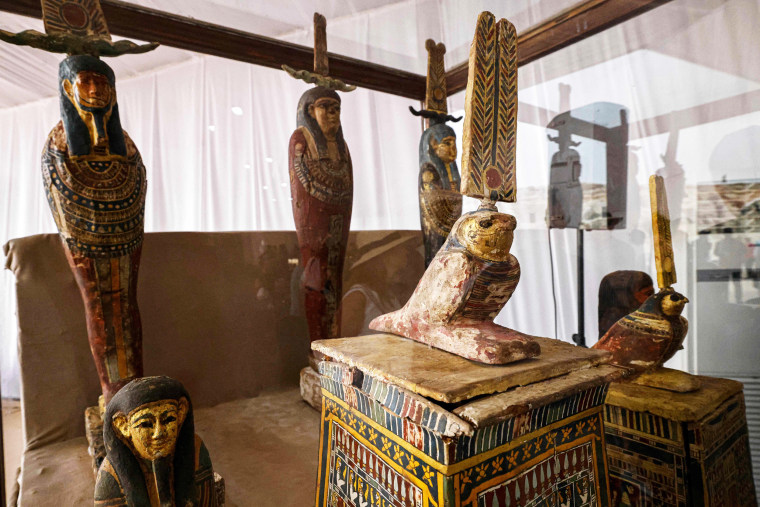The workshops and tombs date back to the 30th pharaonic dynasty (380 B.C. to 343 B.C.) and to the Ptolemaic period (305 B.C. to 30 B.C.), he said.
The animal embalming workshop was made with mud and stone floors, and was discovered alongside bronze tools that would have been used in the mummification process. Five beds made out of stone were discovered still standing inside the room, which would have been used to mummify the most sacred animals.
One of the tombs belonged to “Ne Hesut Ba,” who was the head of scribes and the priest of Horus and Maat during the the fifth dynasty in around 2400 B.C., Sabri Farag, head of the Saqqara archaeological site, said in a separate news release.

The second tomb belonged to a Qadish priest named “Men Kheber” from the 18th dynasty (around 1400 B.C.), he said.
Old Kingdom tombs for humans were discovered painted with the names of the dead and their wives.
Inside the New Kingdom tombs, which date back to the 1500s B.C., alabaster statues of the tombs’ owners were discovered still intact inside, with hieroglyphic text in blue.
In February, the discovery of an unusual set of ceramic vessels at the Saqqara necropolis shed light on how ancient Egyptians mummified bodies.






